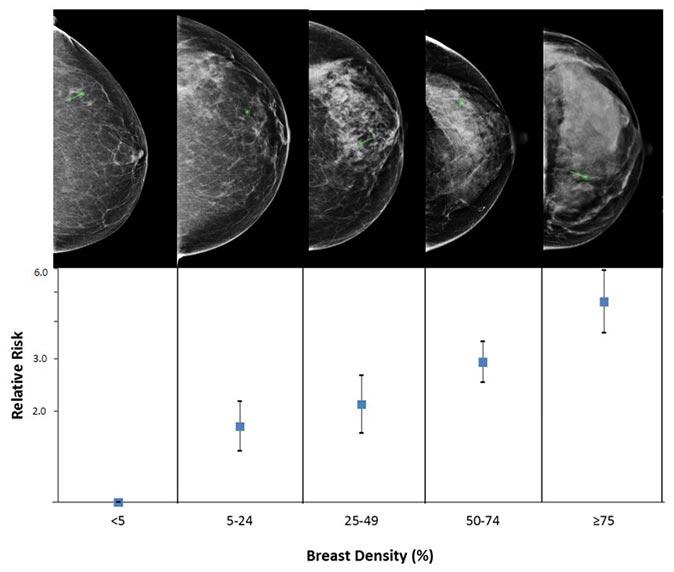Overview
The BREAST Stamp Project aims to characterize the radiologic, histologic, molecular, and biochemical features of dense breast tissue and to understand how the microenvironment of dense breasts promotes neoplastic transformation of the breast epithelium. Risk factor data and biological specimens (blood, buccal cells, tissue fluids, and tissue) required to discover mechanisms and biomarkers that link high mammographic density (as measured quantitatively using computerized methods) to breast cancer risk were collected from study participants.
The study included a total of 466 women ages 40-65 years who were clinically referred to radiologically-guided breast biopsy were enrolled from fall 2007 through summer 2010 from the University of Vermont (UVM) College of Medicine and its affiliated academic medical center, the UVM Medical Center.
Study Team
Principal Investigator: Dr. Gretchen Gierach
Integrative Tumor Epidemiology Branch
Collaborators
- Breast Cancer Surveillance Consortium
- University of Vermont
- University of California at San Francisco
- NCI Division of Cancer Control and Population Sciences
Select Findings and Publications
They found that volumetric MBD measures, assessed using a density phantom, were correlated with two-dimensional area density measurements and shared important associations with several epidemiological factors. However, the data also revealed some differences; most notably, among obese women, measured absolute density was higher with volumetric methods, suggesting that breast cancer risk assessments may vary between these techniques.
Mullooly M et al. Using Digital Pathology to Understand Epithelial Characteristics of Benign Breast Disease among Women Undergoing Diagnostic Image-Guided Breast Biopsy. Cancer Prev Res 2019.
Gierach GL et al. Comparison of mammographic density assessed as volumes and areas among women undergoing diagnostic image-guided breast biopsy. Cancer Epidemiol Biomarkers Prev 2014.

